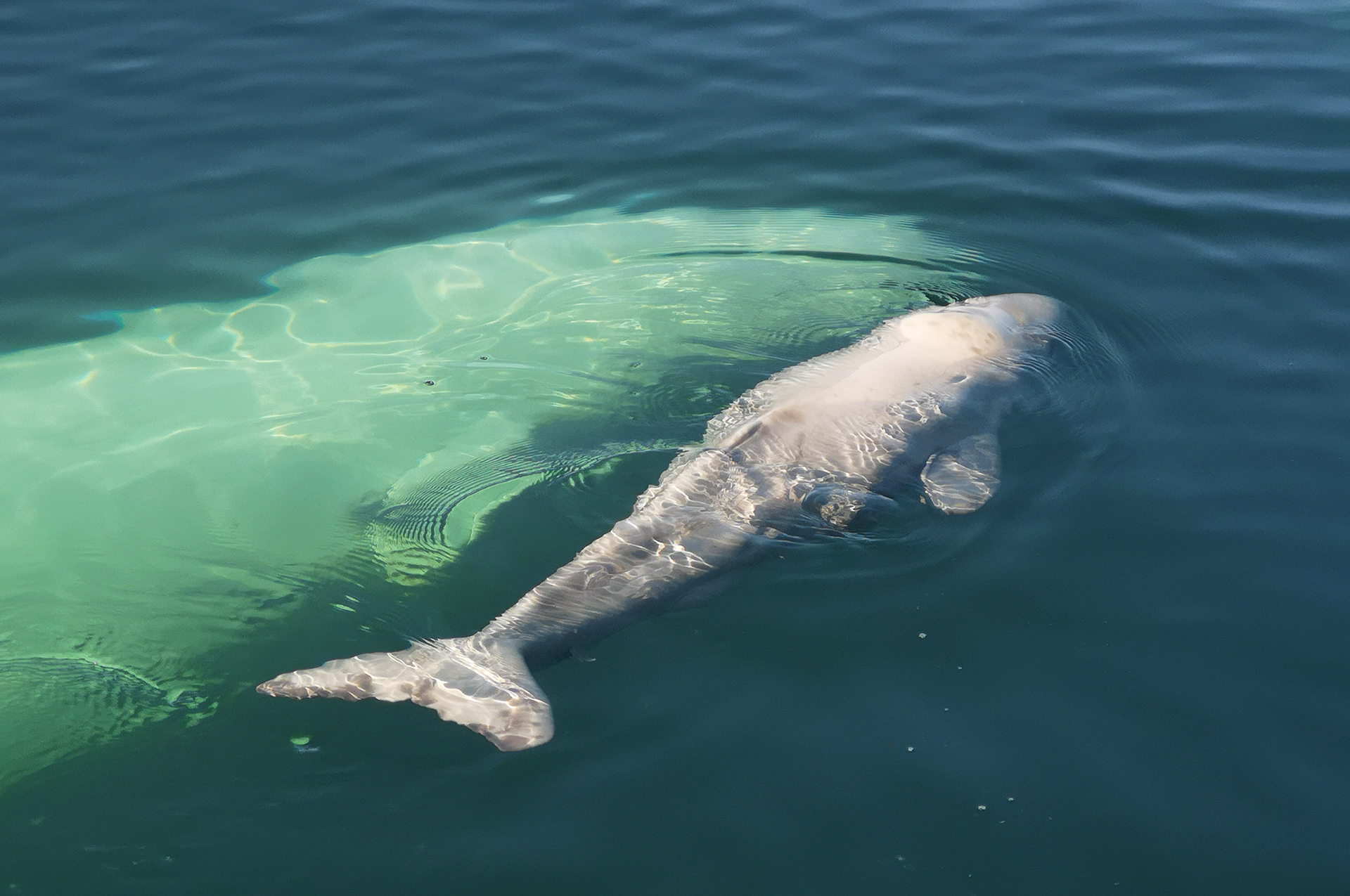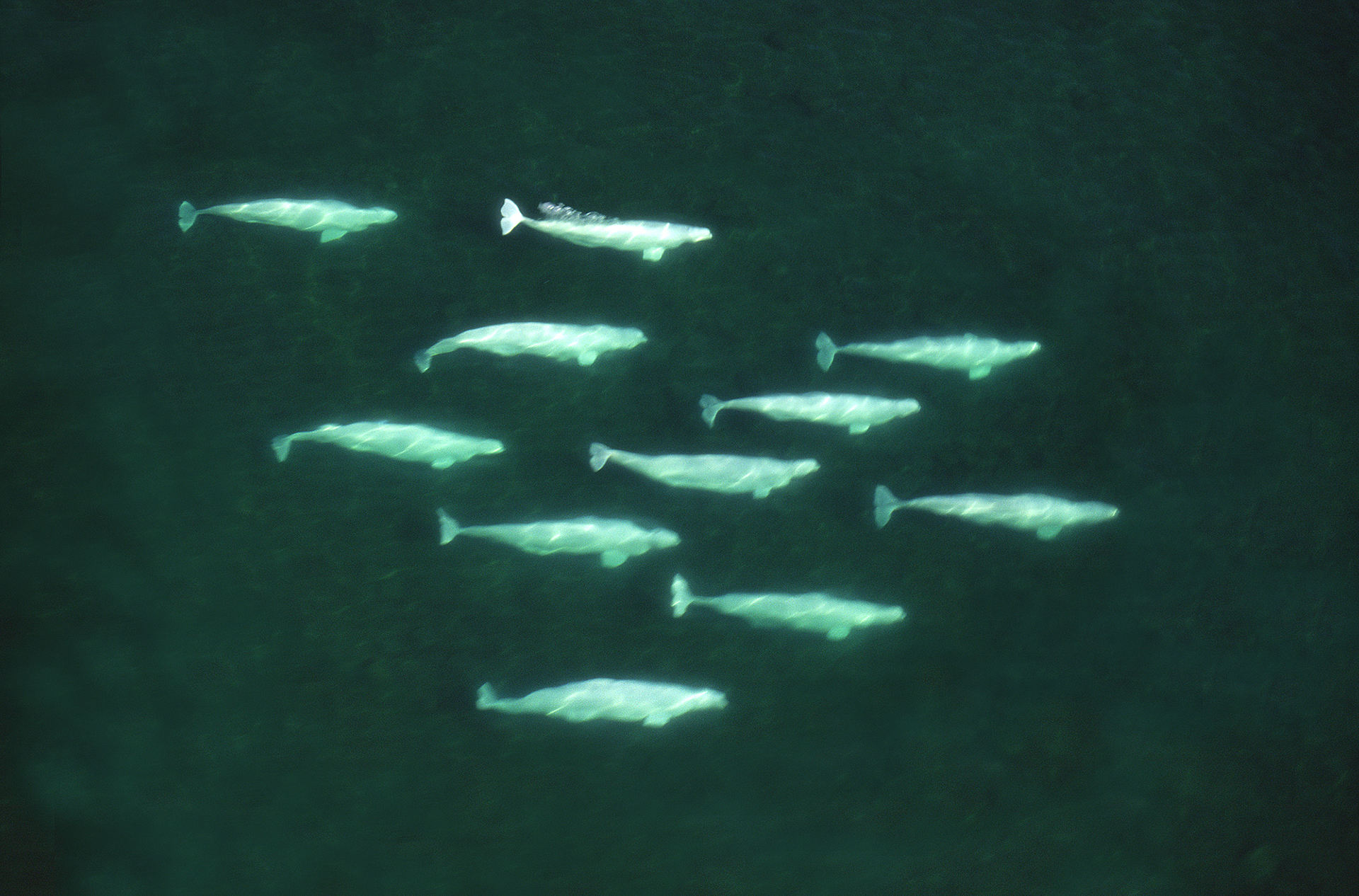Scientific name: Delphinapterus leucas
Average length/height: 2.5-6.5m/8.5-22ft
Average weight: 680-1580kg/1500-3500lbs
Characteristics
Beluga whales have a melon-shaped head and a bulbous forehead that helps them communicate and aids in echolocation. It’s what gives them such expressive faces! Their necks are narrower and the vertebrae in the neck are not fused, allowing them to move their heads all around, especially when they’re curiously watching humans. Belugas lack a dorsal fin so they can maneuver under the ice safely. Dubbed the ‘canaries of the sea’, they sing to each other with clicks, whistles and croons.
Territory/Geographical Locations
Belugas live mostly in the Arctic Ocean, though sometimes they’re seen swimming up rivers, typically feeding at the river mouth. They live in Canada, Greenland, Russia and many regions of Alaska. They like cold water, 0 degrees Celsius (32 degrees Fahrenheit).
In the summer months they migrate to ‘warmer’ coastal waters in large pods, seeking out estuaries for birthing and food sources. In winter they leave the Hudson Bay to ensure they don’t get trapped in the encroaching sea ice.
Population worldwide is 150,000, however, some sub populations are overhunted and reduced enough to be protected by the endangered species act.
Population & Reproduction
Belugas reach maturity at different rates, though as with other mammals, the female reaches sexual maturity first between the ages of four and seven, where males take up to nine years to fully mature. Mating happens in March or April and it takes just over a year (14015 months) for them to give birth. Their calves are 1.2 – 1.8m (4-6 ft) long and weigh 50-60 kg (110-130 lbs).
Scientists have yet to agree on how long belugas live in the wild. Some say 35-50 years while others believe it’s closer to 70 years based on how many teeth they lose per year. They get their teeth at 12-18 months, right around the time they are weaned.
Diet
Belugas are not picky eaters and will sample nearly any creature that comes across their path. This includes anything from snails and sandworms to flounder, salmon and squid. They are carnivores and eat 22.7-27kg (50-60lbs) of food per day. They also have bad manners and do not chew anything—their teeth are mainly for grabbing prey.










